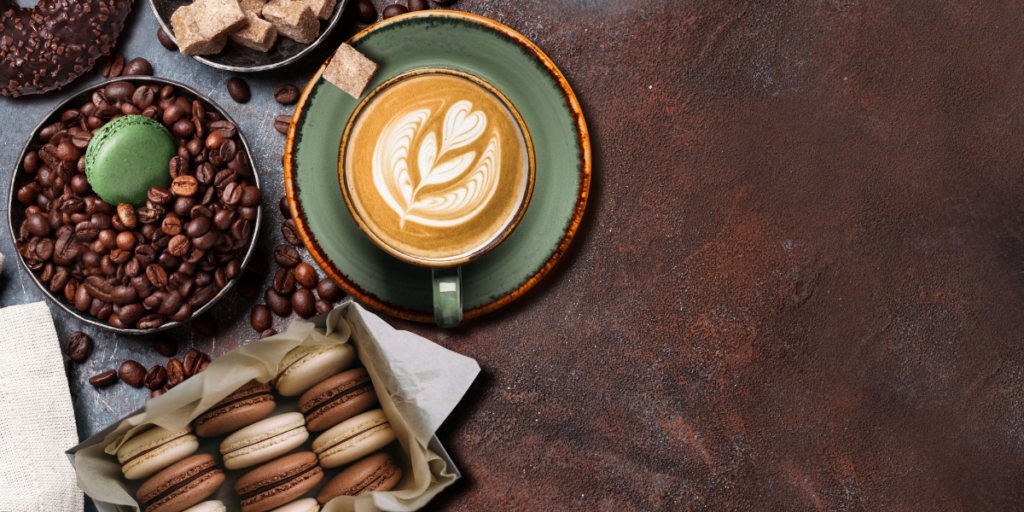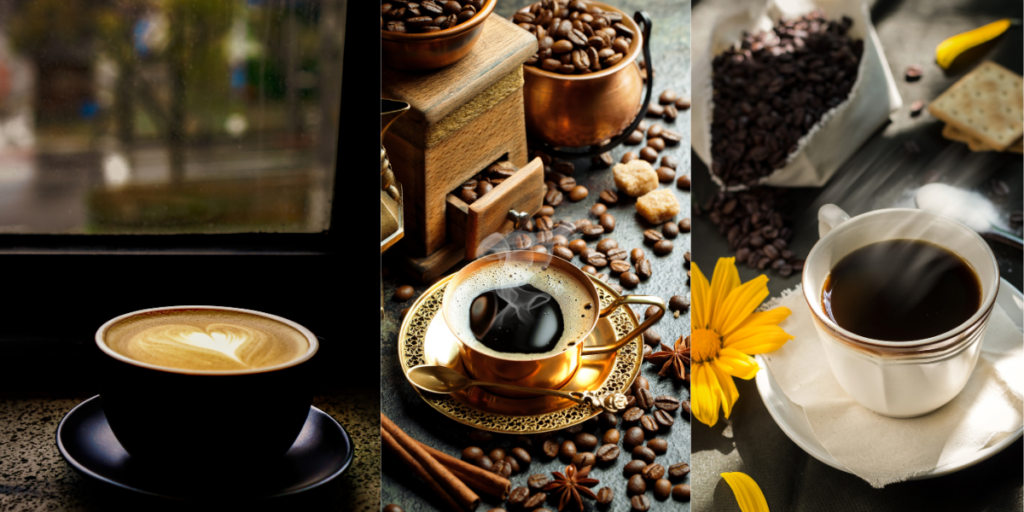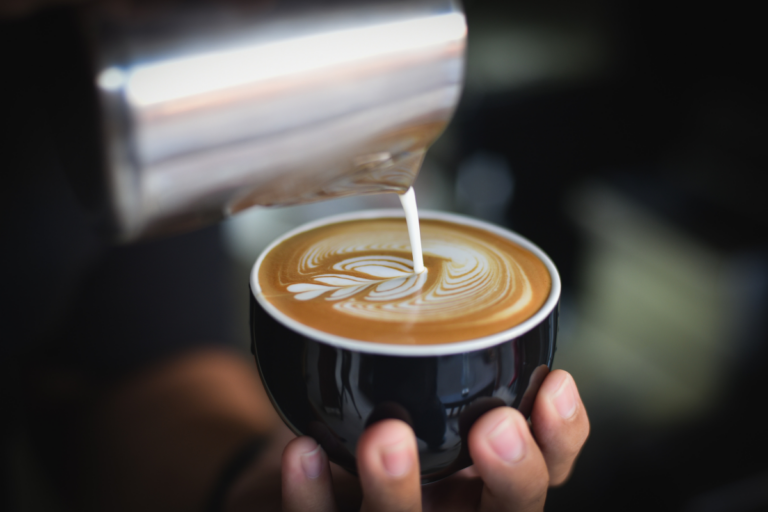I. Introduction
In the realm of gastronomy, the art of tasting serves as a gateway to a world of sensory exploration. From the bold flavors of coffee to the complex profiles of wine, tasting offers a profound experience that transcends mere consumption. Comparing and contrasting coffee tasting with wine tasting not only unveils their unique characteristics but also highlights the intricacies of sensory evaluation. By delving into the similarities and differences between these two beloved beverages, one can gain a deeper understanding of the nuances that define their tasting experiences. This exploration not only appeals to connoisseurs but also invites enthusiasts to embark on a journey of discovery.
II. The Basics of Tasting
Understanding the art of tasting is crucial for appreciating the nuances of both coffee and wine. Tasting is not merely about consuming a beverage but rather a sensory evaluation that engages multiple senses. Aroma, flavor, body, and aftertaste all play significant roles in the tasting experience. Whether it’s the rich aroma of freshly ground coffee beans or the complex bouquet of a well-aged wine, the senses are awakened during the tasting process. Moreover, tasting differs fundamentally from simply drinking; it involves a deliberate and mindful approach to fully appreciate the beverage’s qualities.
Sensory evaluation is key to understanding the intricacies of tasting. In both coffee and wine tasting, individuals learn to discern subtle differences in aroma and flavor. For instance, coffee enthusiasts might detect floral or fruity notes in certain beans, while wine aficionados can identify various fruit, spice, or earthy undertones in different wines. The ability to distinguish these nuances enhances the tasting experience and deepens one’s appreciation for the beverage. Additionally, the body of the beverage, which refers to its weight and texture on the palate, contributes to the overall sensory experience.

A fundamental aspect shared by both coffee and wine tasting is the importance of aroma. The aroma of a beverage provides clues about its flavor profile and quality. In coffee, the aroma can range from floral and fruity to nutty or chocolatey, depending on factors such as the bean origin and roast level. Similarly, in wine, the bouquet offers insights into the grape variety, region, and aging process. Engaging the sense of smell before tasting enhances the anticipation and prepares the palate for the flavor experience ahead. Thus, aroma plays a pivotal role in both coffee and wine appreciation.
Moreover, tasting is a sensory journey that extends beyond flavor and aroma. The body of the beverage, often described as its mouthfeel, refers to its texture and viscosity in the mouth. In coffee, the body can range from light and delicate to full-bodied and velvety, influenced by factors such as the brewing method and bean variety. Similarly, in wine, the body reflects the wine’s alcohol content, grape variety, and aging process. A fuller-bodied beverage may linger longer on the palate, providing a more robust tasting experience. Understanding and appreciating the body of the beverage adds depth to the tasting experience, enriching one’s sensory perception.
III. Similarities Between Coffee and Wine Tasting
Exploring the similarities between coffee and wine tasting reveals intriguing parallels in sensory perception and appreciation. Despite their distinct origins and production processes, both beverages share common elements that contribute to their tasting experiences. One such similarity lies in the significance of aroma. Whether it’s the fragrant aroma of freshly brewed coffee or the complex bouquet of a fine wine, the olfactory senses play a crucial role in both experiences. Aroma not only enhances the anticipation of tasting but also provides valuable insights into the beverage’s flavor profile.
Another shared characteristic between coffee and wine tasting is the appreciation of flavor complexity. Both beverages boast a diverse range of flavors that result from various factors such as bean or grape variety, growing conditions, and processing methods. From fruity and floral notes to earthy and spicy undertones, coffee and wine offer a myriad of flavor possibilities that captivate the palate. Enthusiasts revel in the exploration of these flavor profiles, seeking out new tastes and nuances with each tasting experience. The depth and complexity of flavors contribute to the allure of both beverages, inviting enthusiasts to embark on a continuous journey of discovery.
Furthermore, the concept of terroir plays a significant role in both coffee and wine tasting. Terroir refers to the unique combination of environmental factors that influence the character and quality of agricultural products, including coffee beans and wine grapes. Factors such as soil composition, climate, altitude, and topography contribute to the distinct flavor profiles associated with specific regions. Whether it’s the volcanic soils of Ethiopia that produce renowned coffee beans or the limestone-rich vineyards of Burgundy that yield exceptional wines, terroir imparts a sense of place to both beverages. By exploring the influence of terroir, enthusiasts gain a deeper appreciation for the connection between geography and flavor in coffee and wine.
Moreover, both coffee and wine tasting involve a ritualistic approach that enhances the overall experience. Whether it’s the formal cupping sessions of coffee connoisseurs or the elegant wine tastings at vineyards, rituals and traditions add a layer of sophistication to the tasting process. These rituals often include specific techniques for evaluating aroma, flavor, and body, as well as the use of specialized tasting vessels and equipment. Additionally, communal aspects such as sharing tasting notes and engaging in discussions with fellow enthusiasts contribute to the social aspect of tasting. By embracing these rituals, enthusiasts not only elevate their tasting experience but also foster a sense of camaraderie within the community.
IV. Differences Between Coffee and Wine Tasting
While coffee and wine tasting share certain similarities, they also exhibit distinct differences that stem from their unique characteristics and production processes. Understanding these differences allows enthusiasts to appreciate each beverage on its own merits and to tailor their tasting approach accordingly. One fundamental difference lies in the nature of the beverage itself. Coffee is brewed from roasted coffee beans, whereas wine is fermented from grape juice. This distinction results in distinct flavor profiles and sensory experiences for each beverage.
In terms of sensory profiles, coffee and wine exhibit differences in key attributes such as acidity, bitterness, and sweetness. In coffee tasting, acidity refers to the bright, tangy sensation that enlivens the palate, often accompanied by fruity or citrusy notes. Bitterness, on the other hand, can result from overextraction during brewing or from dark roast levels, adding depth and complexity to the flavor profile. Sweetness in coffee can range from subtle caramel undertones to pronounced sugary notes, balancing the acidity and bitterness for a harmonious taste experience. In contrast, wine tasting involves evaluating acidity, tannins, and sweetness. Acidity in wine contributes to its crispness and freshness, balancing the fruitiness and enhancing the overall structure of the wine. Tannins, which are compounds found in grape skins, seeds, and stems, impart a drying sensation in the mouth and contribute to the wine’s aging potential. Sweetness in wine can vary from bone-dry to lusciously sweet, depending on factors such as grape variety, residual sugar content, and winemaking techniques.
Another notable difference between coffee and wine tasting is the variability and aging potential of each beverage. Coffee is best enjoyed fresh, shortly after roasting, to capture its optimal flavor and aroma. Unlike wine, which can improve with age and develop complex secondary aromas and flavors, coffee does not undergo a transformative aging process. Instead, it is prized for its freshness and vibrancy, with enthusiasts seeking out recently roasted beans to experience the full spectrum of flavors. In contrast, wine undergoes a gradual evolution in the bottle, with certain varieties and vintages gaining complexity and refinement over time. This aging potential adds a layer of intrigue to wine tasting, as enthusiasts anticipate how a wine will evolve and mature with proper cellaring.
Furthermore, the cultural significance and social aspects associated with coffee and wine tasting differ markedly. Coffeehouses have long served as social hubs where people gather to enjoy their favorite brews, engage in conversation, and savor the moment. The ritual of coffee drinking is deeply ingrained in many cultures, with unique customs and traditions surrounding the preparation and consumption of coffee. In contrast, wine tasting often takes place in more formal settings such as vineyards, wineries, or tasting rooms, where enthusiasts sample a variety of wines and learn about their production methods and terroir. Wine tasting experiences may also include food pairings, guided tastings led by knowledgeable sommeliers, and tours of vineyard estates. While both beverages offer opportunities for socializing and connection, the cultural contexts and rituals surrounding coffee and wine differ significantly.
Moreover, health considerations play a role in shaping perceptions and consumption patterns for both coffee and wine. Research has shown that moderate consumption of both beverages may offer health benefits, thanks to their antioxidant properties and potential protective effects against certain diseases. However, it’s important to note that individual responses to caffeine and alcohol can vary, and excessive consumption of either beverage can have adverse effects on health. Thus, enthusiasts are encouraged to enjoy coffee and wine in moderation and to be mindful of their own tolerance levels and health considerations. By staying informed and making informed choices, enthusiasts can continue to savor the pleasures of coffee and wine tasting while prioritizing their well-being.

V. Tasting Techniques and Rituals
Tasting techniques and rituals are integral to the appreciation of both coffee and wine, enhancing the sensory experience and elevating the enjoyment of each beverage. Whether it’s the formal cupping sessions of coffee connoisseurs or the elegant wine tastings at vineyards, rituals and traditions add depth and meaning to the tasting process. These rituals often include specific techniques for evaluating aroma, flavor, and body, as well as the use of specialized tasting vessels and equipment. Additionally, communal aspects such as sharing tasting notes and engaging in discussions with fellow enthusiasts contribute to the social aspect of tasting. By embracing these rituals, enthusiasts not only elevate their tasting experience but also foster a sense of camaraderie within the community.
In coffee tasting, the cupping method is widely used to evaluate the aroma, flavor, and body of different coffee beans. This method involves steeping ground coffee in hot water and then slurping the brew from a spoon to aerate it and spread it across the palate. This allows tasters to assess the aroma, acidity, sweetness, and mouthfeel of the coffee, as well as to identify any defects or off-flavors. Additionally, evaluating the roast level of the coffee is an essential aspect of tasting, as it can influence the flavor profile and overall quality of the brew. By examining the color, aroma, and taste of the roasted beans, tasters can gain insights into the roasting process and its impact on the final product.
In wine tasting, a similar ritualistic approach is employed to evaluate the aroma, flavor, and structure of different wines. This typically involves a series of steps, beginning with visually inspecting the wine for clarity, color, and viscosity. Next, tasters swirl the wine in the glass to release its aromas and then take a series of short sniffs to assess the bouquet. By identifying various fruit, floral, spice, or earthy notes, tasters can gain insights into the wine’s origin, grape variety, and aging potential. Afterward, tasters take a small sip of the wine, allowing it to coat the palate and fully express its flavors. This step involves assessing the wine’s acidity, tannins, sweetness, and overall balance, as well as noting any distinctive characteristics or flaws. Finally, tasters may evaluate the wine’s finish or aftertaste, which refers to the lingering sensations and flavors that remain in the mouth after swallowing. By following these steps and engaging the senses, enthusiasts can deepen their understanding and appreciation of different wines and enhance their tasting experience.
VI. Cultural Significance and Social Aspects
Coffee and wine hold distinct cultural significance and occupy unique roles in social settings, reflecting the diverse customs and traditions of different regions and communities. Coffeehouses have long served as gathering places where people come together to enjoy their favorite brews, engage in conversation, and share ideas. From the bustling cafes of European cities to the traditional coffee ceremonies of Ethiopia, coffee drinking is steeped in ritual and tradition, fostering connections and community bonds. Moreover, coffee has become a ubiquitous beverage enjoyed by people of all ages and backgrounds, transcending cultural boundaries and serving as a universal symbol of hospitality and camaraderie.
In contrast, wine tasting is often associated with more formal and refined settings, such as vineyards, wineries, or tasting rooms. Wine enthusiasts gather to sample a variety of wines, learn about their production methods and terroir, and engage in guided tastings led by knowledgeable sommeliers. These experiences may also include food pairings, tours of vineyard estates, and opportunities to meet winemakers and learn about their craft. Additionally, wine tasting events and festivals provide opportunities for enthusiasts to discover new wines, connect with like-minded individuals, and deepen their appreciation for the art of winemaking. Whether it’s a leisurely afternoon at a local
wine bar or an immersive wine tour through picturesque vineyards, wine tasting offers a unique blend of education, entertainment, and social interaction.
Furthermore, the rituals and traditions associated with coffee and wine drinking reflect the cultural values and practices of different societies. In Ethiopia, for example, the traditional coffee ceremony is a time-honored ritual that involves roasting, grinding, and brewing coffee beans in a ceremonial fashion. This communal event brings family and friends together to share in the preparation and enjoyment of freshly brewed coffee, accompanied by lively conversation and storytelling. Similarly, wine has played a central role in the rituals and celebrations of cultures around the world for centuries. From religious ceremonies and weddings to festive gatherings and formal banquets, wine has been revered as a symbol of abundance, prosperity, and conviviality. By participating in these rituals and traditions, enthusiasts not only deepen their connection to coffee and wine but also gain insights into the rich tapestry of human culture and history.
Moreover, the social aspects of coffee and wine drinking extend beyond individual enjoyment to encompass broader community engagement and economic impact. Coffeehouses serve as important social hubs where people come together to connect, collaborate, and exchange ideas. These vibrant gathering places contribute to the fabric of urban life, fostering creativity, diversity, and cultural exchange. Moreover, coffee cultivation and trade support millions of livelihoods around the world, from smallholder farmers and cooperatives to exporters and roasters. By supporting sustainable and ethical coffee practices, enthusiasts can contribute to the well-being of coffee-producing communities and help ensure a brighter future for the industry.
Similarly, the wine industry plays a significant role in shaping local economies, tourism, and cultural identity in wine-producing regions. Vineyards and wineries attract visitors from near and far, offering immersive experiences that highlight the unique terroir and winemaking traditions of each area. Wine tourism has become a thriving industry, driving economic growth and creating jobs in hospitality, retail, and related sectors. Additionally, the global wine trade facilitates cultural exchange and appreciation, as consumers have access to a diverse array of wines from around the world. By supporting local wineries and exploring new wine regions, enthusiasts can contribute to the vitality and sustainability of the wine industry while expanding their own palate and appreciation for different wine styles.
In conclusion, the cultural significance and social aspects of coffee and wine drinking are as diverse and complex as the beverages themselves. From the bustling cafes of urban centers to the picturesque vineyards of wine country, coffee and wine serve as catalysts for connection, community, and cultural exchange. By embracing the rituals and traditions associated with coffee and wine drinking, enthusiasts can deepen their appreciation for these beloved beverages while forging meaningful connections with others. Moreover, by supporting sustainable and ethical practices in coffee and wine production, enthusiasts can contribute to the well-being of communities around the world and help ensure a vibrant and thriving future for these industries. Whether it’s savoring a freshly brewed cup of coffee with friends or indulging in a glass of fine wine at a vineyard tasting, the pleasures of coffee and wine drinking are best enjoyed in good company, surrounded by the warmth and camaraderie of fellow enthusiasts. Cheers to the timeless traditions and enduring pleasures of coffee and wine!
VII. Health Benefits and Considerations
The health benefits and considerations associated with coffee and wine consumption are subjects of ongoing research and debate. While both beverages have been touted for their potential health-promoting properties, it’s essential to approach their consumption with moderation and mindfulness. Coffee and wine contain a variety of bioactive compounds, including antioxidants, polyphenols, and phytochemicals, which have been linked to various health benefits.
Coffee, for example, is a rich source of antioxidants, such as chlorogenic acids and caffeine, which have been associated with reduced inflammation and improved cognitive function. Studies have suggested that moderate coffee consumption may lower the risk of certain chronic diseases, including type 2 diabetes, Parkinson’s disease, and Alzheimer’s disease. Additionally, coffee has been linked to a reduced risk of certain types of cancer, such as liver and colorectal cancer, although more research is needed to confirm these findings. However, it’s important to note that excessive caffeine intake can lead to adverse effects such as insomnia, anxiety, and gastrointestinal discomfort. Therefore, it’s recommended to limit coffee consumption to moderate levels, typically defined as 3-4 cups per day, and to avoid excessive intake, especially in sensitive individuals.
Similarly, wine contains a range of polyphenolic compounds, such as resveratrol and flavonoids, which have been associated with cardiovascular benefits and antioxidant properties. Moderate wine consumption has been linked to a reduced risk of heart disease, stroke, and certain types of cancer, as well as improved endothelial function and cholesterol levels. Red wine, in particular, is often touted for its high resveratrol content, which is believed to confer protective effects against age-related diseases. However, it’s important to consume wine in moderation and to be mindful of its alcohol content, as excessive alcohol intake can have detrimental effects on health, including liver disease, addiction, and impaired cognitive function. To reap the potential health benefits of wine, it’s recommended to limit consumption to one glass per day for women and up to two glasses per day for men, along with meals and in the context of a healthy lifestyle.
Moreover, it’s essential to consider individual differences in caffeine and alcohol sensitivity, as well as potential interactions with medications and underlying health conditions. Some individuals may be more sensitive to caffeine or alcohol and may experience adverse effects even at moderate levels of consumption. Additionally, certain medications, such as blood thinners and antidepressants, may interact with caffeine or alcohol, leading to unwanted side effects or reduced efficacy. Therefore, it’s important to consult with a healthcare professional before making any significant changes to your coffee or wine consumption, especially if you have underlying health conditions or are taking medications that may interact with these beverages.
Furthermore, it’s crucial to adopt a balanced and mindful approach to coffee and wine consumption, taking into account the overall context of your diet and lifestyle. While both beverages can be enjoyed as part of a healthy diet, they should not be relied upon as a primary source of nutrition or hydration. Instead, they should be consumed in moderation and as part of a varied and balanced diet that includes plenty of fruits, vegetables, whole grains, and lean proteins. Additionally, it’s important to stay hydrated by drinking plenty of water throughout the day and to avoid excessive consumption of sugary or caffeinated beverages.
In conclusion, coffee and wine offer a range of potential health benefits when consumed in moderation as part of a healthy lifestyle. However, it’s essential to approach their consumption with mindfulness and moderation, taking into account individual differences in caffeine and alcohol sensitivity, as well as potential interactions with medications and underlying health conditions. By adopting a balanced and mindful approach to coffee and wine consumption, enthusiasts can enjoy the pleasures of these beloved beverages while prioritizing their health and well-being. Cheers to good health and the enduring pleasures of coffee and wine!
VIII. Conclusion
In the journey of exploring the palate, coffee tasting and wine tasting stand out as distinct yet interconnected experiences, each offering its own delights and discoveries. By comparing and contrasting these two beloved beverages, enthusiasts gain a deeper appreciation for the nuances of sensory evaluation and the rich tapestry of flavors that captivate the palate. From the bright acidity of freshly brewed coffee to the velvety smoothness of a well-aged wine, the world of taste invites exploration and celebration.
As we’ve journeyed through the similarities and differences between coffee and wine tasting, it’s clear that both beverages share a common thread of sensory exploration and appreciation. Whether it’s the significance of aroma, the complexity of flavor, or the influence of terroir, coffee and wine offer endless opportunities for discovery and delight. By embracing the rituals and traditions associated with each beverage, enthusiasts can elevate their tasting experience and deepen their connection to the world of taste.
Moreover, as we’ve explored the cultural significance and social aspects of coffee and wine drinking, we’ve discovered the profound impact that these beverages have on communities around the world. From the bustling coffeehouses of urban centers to the picturesque vineyards of wine country, coffee and wine serve as catalysts for connection, community, and cultural exchange. By supporting sustainable and ethical practices in coffee and wine production, enthusiasts can contribute to the vitality and well-being of these industries while preserving the rich traditions and heritage associated with each beverage.
In conclusion, the pleasures of coffee and wine tasting are best enjoyed in good company, surrounded by the warmth and camaraderie of fellow enthusiasts. Whether it’s savoring a freshly brewed cup of coffee with friends or indulging in a glass of fine wine at a vineyard tasting, the joys of sensory exploration and connection are timeless and enduring. As we raise our cups and glasses in celebration, let us toast to the boundless delights of the palate and the enduring pleasures of coffee and wine. Cheers!


